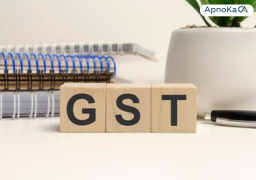# taxlaws
12 posts in `taxlaws` tag
.png)
Key insights into how new income tax regulations can impact shareholders
For shareholders, the proposed increase in the corporate tax rate from 21% to 28% might have significant ramifications. Reduced capital gains, dividends, and corporate earnings might put stockholders at risk of higher taxes and slower market expansion. Higher taxes, though, may also lessen income disparity and boost public coffers. This blog examines the possible advantages and disadvantages of the new income tax laws for shareholders and offers advice on adjusting to these adjustments.
.jpg)
The Income Tax Act's Section 168A: Guaranteeing Relief in Unprecedented Times
Section 168A of the Income Tax Act provides relief to taxpayers during emergencies like pandemics or natural disasters by allowing the government to extend tax-related deadlines. This section helps avoid penalties and reduces the compliance burden when normal operations are disrupted. It was widely used during the COVID-19 pandemic to extend deadlines for filing returns and completing assessments. While it offers temporary relief, the extensions are time-bound and rely on government notifications. This provision ensures flexibility for taxpayers during challenging times.

NRI Taxation: Indexation Benefits and Its Implications
This blog post explores the nuances of indexation benefits for Non-Resident Indians (NRIs) in India, highlighting the differences between residents and NRIs, and providing guidance on how to plan investments to minimize tax liability.

FY 2023-24 Income Tax Audit Simplified
The income tax audit process for FY 2023-24 can be challenging, but with the right preparation, businesses and individuals can manage it effectively. This blog explores who is required to undergo an audit, how to prepare by gathering essential documents like Form 16 and Form 26AS, and the steps involved in the audit process. Engaging a Chartered Accountant (CA) is key to ensuring compliance with tax regulations. The audit process also provides opportunities for improving financial record-keeping, tax planning, and dispute resolution. This guide offers insights into navigating the audit process confidently.

Understanding the Importance of Timely TDS Tax Return Filing
Timely filing of TDS returns is crucial for avoiding hefty penalties and ensuring compliance with India's tax laws.

Section 234A - Interest on Late Filing of Income Tax Returns
The Income Tax Act's Section 234A, which charges interest to taxpayers for late filing of their income tax returns, is explained in this blog entry. It offers a thorough description of the interest calculation process, the repercussions of nonpayment, and an example of how to compute interest using Python code. The purpose of this post is to inform taxpayers about the significance of timely return filing in order to prevent having to pay interest under Section 234A.

An Extensive Study of Income-tax Act of 1961 Section 139(8A)
The Income-tax Act, 1961's Section 139(8A), which addresses the filing of late income tax returns in India, is thoroughly examined in this blog. The blog is a thorough resource for taxpayers and tax experts, covering the background, salient points, ramifications, and commonly asked issues around this rule.

Section 194R of the Income Tax Act: A Complete Guide
The Income Tax Act's Section 194R, which addresses the tax deduction at source (TDS) on payments made to resident contractors or professionals, is covered in detail in this blog. It goes over the main points of the section, such as the tax rate, exemptions, threshold amount, and penalties for not complying. The blog also gives advice on how to ensure compliance and offers insights into the real-world applications of Section 194R.
.jpg)
Tax Audit for Transfer Pricing: A Guide for FY 2023-24
This blog article offers a thorough overview of tax audit for transfer pricing in India. It addresses the fundamentals of transfer pricing, who must file a tax audit report, important report components, and ways to guarantee regulatory compliance. This post is a must-read for organizations with foreign transactions or specific local transactions as the deadline of October 31, 2024, draws near.

New TDS Rates for FY 2024-25 and AY 2025-26: A Simplified Explanation
With effect from October 1, 2024, the updated TDS rates for FY 2024–25 and AY 2025–26 have been released. This blog discusses the effects on people and businesses and offers a comprehensive graphic of the updated TDS rates. To guarantee compliance with tax laws and to capitalize on the advantages provided by the new rates, it is imperative that individuals and corporations comprehend the revised TDS rates and their ramifications.

A Complete Guide to the Amendments to the Income Tax Act of 1961 to the Finance Act of 2024
An extensive overview of the changes made to the Income Tax Act of 1961 by the Finance Act of 2024 may be found in this blog article. It discusses the main adjustments, their effects on taxpayers, and the new tax system, tax rates, deductions, and exemptions.

Save Big on Taxes: Understanding Income Tax Allowances for Salaried Employees in India
An extensive guide on India's income tax benefits for salaried individuals for the fiscal year 2024 may be found in this blog post. It includes a number of allowances, including standard deduction, professional tax, perks, medical allowance, housing rent allowance (HRA), transportation allowance, leave travel allowance (LTA), and medical allowance. The article also discusses other Section 80C, Section 80D, and Section 24 deductions that are possible, such as interest on house loans, medical insurance, and investment-linked deductions. Salaried people can maximize their tax savings and reduce their taxable income by being aware of and utilizing these deductions and allowances.
